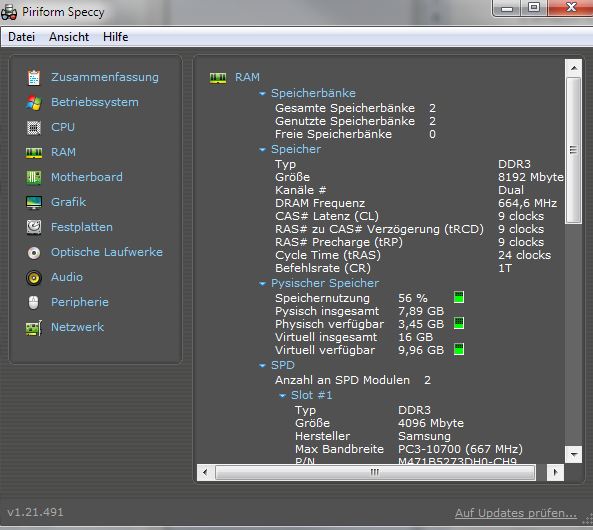


A dual-channel configuration is ideal, though, and there is often little reason to not be running dual sticks since that’s how they are most often sold. With a single-channel DDR4 configuration… you should actually be fine.
SPECCY RAM LOW SPEED UPGRADE
Upgrade that to a dual-channel DDR3 config and you should be fine, though. With a single-channel DDR3 configuration… yeah, your frames are going to suffer, especially in modern games. Yes, but probably not in the way you are thinking.Īssuming you are running a DDR3 setup and DDR4 setup with the same speed and capacity… (A single-channel DDR4-2400 stick will run at half speed, but still, exceed a DDR3-1333 kit running in dual-channel.) If you can’t have a dual-channel configuration, at least make sure it’s a very fast DDR4 stick to help reduce the speed penalty. Whenever possible, make sure you have a dual-channel RAM configuration. Moreover, why buy something and only get half of its projected power?

This can still be okay for common use, but you may see issues in games or other heavy applications. Since only one stick is present, it’s actually running at half speed, or 1066 MHz. #2 only uses a single 8GB RAM stick, though, and that’s where problems arise. That’s great, and should be more than enough for common use and most gaming scenarios. #1 uses two 4GB RAM sticks, so they both reach their rated speed of 2133 MHz. To get 8GB of RAM 2133 MHz in this scenario, you need two identical 4GB RAM sticks running together.
SPECCY RAM LOW SPEED FULL
For DDR RAM to reach its full rated speeds, you need two identical RAM sticks running together (that’s why you will usually see RAM sold in double packs). This is because of channel configurations. In fact, #2 is actually running at half the speed of #1.
SPECCY RAM LOW SPEED PC
If you’re like most people who don’t understand much about PC hardware… you would assume that #2 is faster, or at least equally fast as #1. Quick, choose one of the configurations below! A few DDR3 RAM kits exist out in the wild with speeds above 2133 MHz, but those are increasingly rare (and often expensive as a result) and don’t come anywhere near DDR4’s maximum potential. Mainstream DDR4 RAM started at that speed and has since shifted to 2400 MHz as a baseline. Mainstream DDR3 RAM peaked out right around 2133 MHz in speed. Now, for the other big question: is DDR4 faster than DDR3? Yes… usually. As such, you are sort of guided towards using DDR4 regardless. It’s also becoming more expensive as its availability dwindles. Use Speccy to verify your RAM speed, standard, and capacity if you aren’t sure.īecause of these compatibility issues, DDR3 has become more of a nuisance to build around. If your PC is from 2014 or earlier, it is most likely using DDR3 RAM. This means that DDR3 RAM won’t work on a DDR4 motherboard or vice versa. Despite the physical similarity of their DIMMs (RAM stick), these standards are not cross nor backward-compatible. As explained above, the biggest difference is that DDR4 is the standard that succeeds DDR3.


 0 kommentar(er)
0 kommentar(er)
